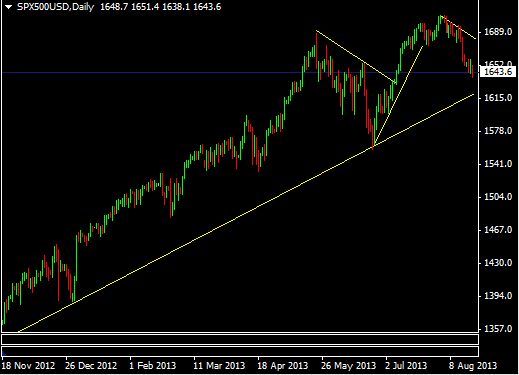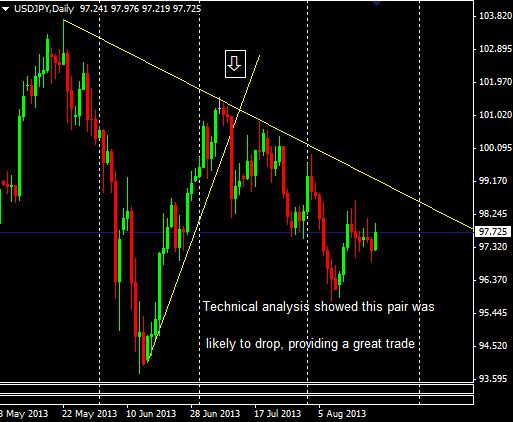Advantages of Technical Analysis
Technical versus fundamental analysis has been a long-standing debate amongst investors, but for day trading or short-term trading technical analysis is the way to go. Technical analysis is the study of price charts and basically any information that can be compiled from them, such as volume analysis, cycles, trends and statistics. Technical analysis is used to forecast price movements, as well as provide methods of entry and exits from trades.
If you are new to trading, here are some of the advantages of technical analysis.
Provides All Current Information
The current price reflects all currently known information about an asset.
While rumors may constantly swirl that the price may plummet or surge, ultimately the current price is the balancing point for all information.
As investors and traders sway from one side to the other–buyers or sellers–the asset moves reflecting the current perception of value.
If this is true, then the only information we need is a price chart since all information and perceptions of value are recorded in the price gyrations on that chart.
There is no need to concern yourself with why a price is falling or rising, the fact that it is tells you there is more selling interest than buying interest, or more buying interest than selling interest, respectively.
This makes trading much simpler because with technical analysis we are focused on the price chart. No scouring financial statements or reading the latest financial news…it’s all reflected in the price anyway.
Prices Move in Trends
If prices just gyrated wildly and randomly it would be very hard to make money. While wild gyrations do occur, overall prices typically move in trends.
There is a directional bias to the price which provides traders with an advantage. Much of technical analysis is about determining when a trend is in place, when it isn’t (called a sideways market, range or correction) and when a trend is reversing.
Most profitable trading methods used by traders are trend following strategies. This means you isolate the trend, and then find opportunities to enter in the same direction as the trend, thus capitalizing on the directionally biased price movement.
Trends occur on various “degrees.” For example you may have a long term uptrend on the daily or weekly chart, but on shorter time frames, or at the far left of the chart you may have a downtrend. Figure 1 shows an example of this.
Figure1. S&P 500 Trends

Trends are where traders make money, whether short term trading or longer term. Therefore, technical analysis provides you with tools for doing just that.
History Repeats
Technical analysis is largely based on uncovering common patterns, finding those patterns again and using them to trade. This doesn’t mean that history repeats exactly though.
For example, there is a common chart pattern called the triangle. The general construct is always similar, but each time it will likely be bigger or small than the last triangle, and may breakout in a different direction than the prior one.
Therefore, history repeats in a general way, not necessarily producing an exact replica of prior patterns.
Realizing that human psychology doesn’t change much, the technical analyst understands that we will continually see the rise and fall of asset prices as traders and investors play out the emotions of fear and greed.
The emotions, as well as others, create patterns in asset prices across all time frames. The technician is able to recognize these patterns and then trade them, using history as a guide and the current price as a catalyst.
Timing
A major advantage of technical analysis is that it provides you with ways to “time” your trades.
With a fundamental approach your research may dig up some interesting news on a company’s stock that you think may cause it to rise in the future, but when?
With technical analysis you can wait, and use your money for other opportunities until the price tells you the stock is ready to move higher.
Figure 2 shows how simple technical analysis indicated that this pair was about to drop. The pair did drop, and technical analysis provided great timing for a great trade.
Figure 2. USD/JPY Timing Signal

Any Time Frame or Market
Once you learn technical analysis, and it is a large field, you can apply many of the concepts to multiple markets, such as stocks, forex, futures, binary options, CFDs and even housing and art prices.
All market trading is based on patterns of human behaviour, patterns which then appear on price charts across markets.
This means you don’t need to learn how to analyze every market specifically. While there may be some small differences between analyzing stocks and the highly-leveraged forex market, most of technical analysis knowledge will serve you well in all markets.
Additionally, technical analysis can be used on any time frame, whether you trade daily or weekly charts, or trade 60 second binary options.
Financial markets are considered “fractal,” which basically means patterns that appear on the smallest scale also appear on the largest, and vice versa.
This once again means that most of your accumulated technical analysis knowledge can be just as easily applied to a 1 minute chart as it can to a daily chart.
Final Word On Technical Analysis
Technical analysis is the preferred tool for short term traders. It provides ways to time your trades so you aren’t wasting time, and you can implement the methods in multiple markets or time frames if you desire. Technical analysis is based on the price reflecting all current information on an asset, and that the current price is the current perception of value.
Also, technical analysis is used to isolate trending and non-trending periods. Finally, technical analysis is used to spot patterns, and then trade them, since history often repeats itself in general structure.